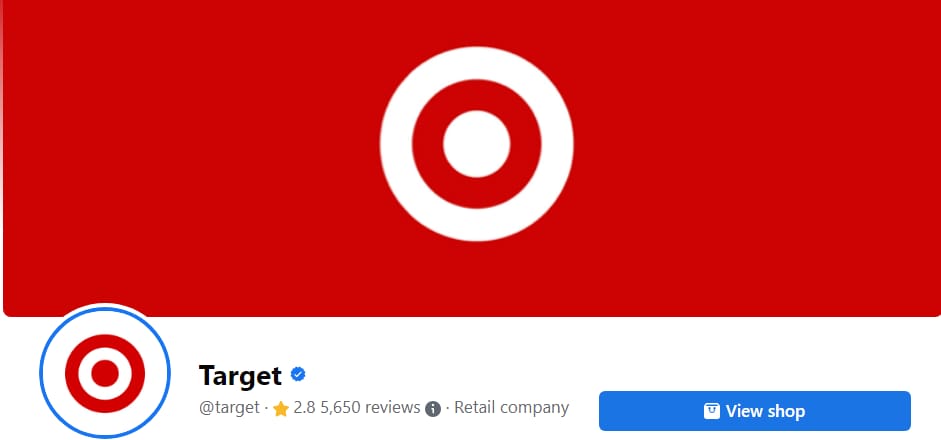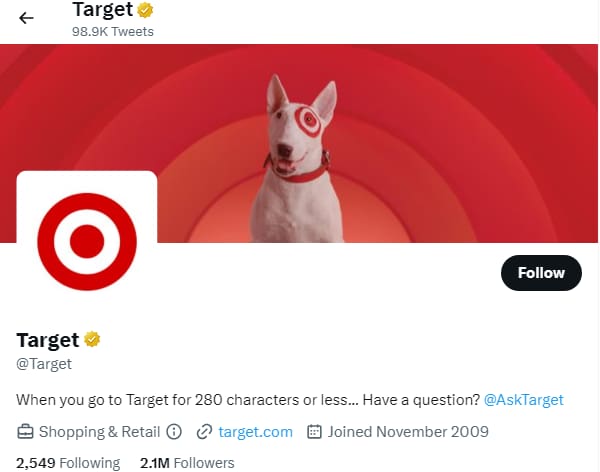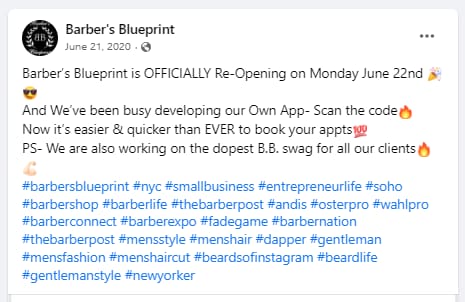6 Social Media Branding Tips for Small Businesses
Let’s think of McDonald’s for a second. What comes to mind? Burger, fries, chicken? I bet their playful “M” logo on mustard-yellow background came to mind too, yes? That’s the power of branding.
Now, you’re forced to subconsciously think of the fast food chain whenever you spot a similar “M” logo, whether or not it’s the McDonald’s logo. Though their branding success might be attributed to being a popular household name, the basics of effective social media branding apply to aspects of managing reputation for smaller businesses as well.
According to Hubspot, 36% of Gen Z and 22% of millennials prefer to search for brands on social media rather than via search engines. Your campaign could get lost in the shuffle if you don’t do what you can to stand out. To stand out, you need strong social media branding.
In this article, you’ll learn some effective social media branding tips for your business.
What are the benefits of social media branding?
One of the biggest advantages of social media branding is increased brand awareness. By using social media platforms consistently to promote your message, values, and content, potential customers get to know you and what you stand for. This helps you establish a recognizable brand presence.
Customer engagement is another significant benefit. Social media branding lets you communicate directly with customers. It can also let customers communicate directly with you as well. That can lead to conversions and, ultimately, customer loyalty.
In other words, social media branding doesn’t just help you build a strong online reputation. It can also help you achieve business growth.
Social media branding tips
Social media branding levels the playing field for small businesses to boost their visibility. Here are social media branding tips to follow:
1. Define your brand identity
You first need to define your brand identity. A well-designed brand identity tells people who you are, your values, and why they should care about you.
To define your brand identity, you need to determine your brand message and voice.
Your brand message must contain a unique value proposition. To figure out your message, ask yourself what makes you stand out from the competition. Look at your business values and goals as well.
So, after self-reflection, you might decide you’re a fun business that sells baby products and values customers first, for instance.
You can then determine your brand voice based on your brand message. So, since you’ve decided you’re a business with a fun personality, you might decide to use casual language.
This is exactly the type of brand voice Eizzy Baby uses to showcase its edgy persona:
Once you have your brand identity, create a content style guide to help you stick with it always.
2. Understand your target audience
Whether you’re an established business or a startup applying for small business grants, understanding the audience is always key. This can help you tailor your social media branding efforts.
To understand your audience, create persona profiles for your audience segments. They should include information about their preferred social media platforms and behaviors.
Include in your persona audience demographics. Specify, too, how they engage with brands within and outside your industry. Figure out what kind of content they want to see.
You can get all this information from the in-built analytics of social media platforms or by asking your audience yourself.
Here’s an example of an audience persona. It shows the persona’s challenges, buying triggers, and active channels. If you’re a small firm that gives business advice, this could be helpful for your targeting.
The more detailed your persona, the better. This information will help ensure your social media branding strategies resonate with your audience.
3. Choose the right social media platforms
Understand where your target audience hangs out to choose the best social media platform for your business. You can check out your audience persona for this.
You must also consider what social channels will get you the best audience engagement. For example, if you’re a small SaaS business, LinkedIn is perfect for generating buzz among professionals and companies. Meanwhile, a food business is more likely to get more engagements on TikTok and Instagram.
As a small business owner, do not spread your resources thin by using many social media channels at once. Start on one, maybe two platforms, and as you grow your social media presence, branch out to others.
The types of content you create will also influence your choice of social networks. For instance, if, based on your audience persona, your campaign should rely heavily on video, YouTube and Instagram are your best options.
If your competitors are doing well on some channels, it’s a good sign you can use them, too. Use tools like Mention and Sprout Social to track this information.
4. Develop consistent branding elements
The most memorable business brands have one thing in common — unmistakable brand elements. McDonald’s has the whimsical yellow ‘M’ on a distinct red background to showcase its fun personality:
Color and font style are branding attributes that should remain consistent regardless of how many (re)branding efforts you pull through. This consistency helps convey the same brand identity and experience to your audience. It boosts brand recognition from a mile.
People associate feelings with colors, and the right color palette can convey specific emotions. For instance, blue establishes trust, while red portrays urgency and excitement.
Choosing the right fonts is just as important. McDonald’s logo uses a custom font called Speedee. It has rounded edges and exaggerated curves. The font is a wonderful choice for businesses that want to convey fun and excitement without sacrificing their brand identity.
In contrast, brands like SONY use Slab Serif fonts, a decorative font type with a blocky appearance and mono-linear strokes. This makes it ideal for businesses that want to make a bold statement and radiate confidence.
So, you need to go back to your brand identity and audience persona to determine the right colors and font for you.
Once you’ve determined your visual branding elements, you want to use them consistently across your social media channels. This will help reinforce your brand image on social media.
Although Target isn’t a small business, we can learn a thing or two from how it maintains social media branding consistency. See how the retailer’s Facebook account looks above.
Now here’s their Twitter account:
Notice how they look the same? So when someone sees the same visual elements somewhere else, they’ll automatically associate them with Target.
5. Create on-brand engaging content
Now that you’ve determined your visual branding elements and identity, it’s time to create engaging and optimized content. Your social media content shouldn’t just spur action from your audience. It should also reflect your social media branding by incorporating your visual branding elements and showcasing your brand identity.
Content optimization involves tailoring your content to maximize its effectiveness and impact. In the context of social media, it means ensuring that your content aligns with your visual branding and effectively communicates your brand identity. This can be achieved by integrating your visual branding elements, such as your logo, color palette, typography, and imagery, into your social media posts.
Including the first in your post won’t be a problem if you make your logo your profile picture on social media accounts like Facebook. After all, the logo automatically appears in every post you make on the platform. But to showcase your more abstract brand identity in your social content, you need to make a conscious effort.
When writing or when using other visual content in your post, for instance, you’ll need to carefully choose the language and images that showcase your personality. The values you showcase in your post should also be the same values you want to highlight as a brand in the first place. All these apply regardless of the type of post you publish—whether you’re announcing social media updates or a new product.
Check out New York-based Barber’s Blueprint Facebook post:
It doesn’t just include the shop’s visual branding elements (the letter B, inverted B and plant leaves in its logo). Its post also showcases the brand’s “swag” personality. Note the use of emoticons and the use of casual language. The post also emphasizes the brand’s customer-first core value by announcing an app that makes it easier for clients to book appointments.
Utilize user-generated content (UGC) when you run out of quality content ideas. You may run a video contest asking social media users to submit short videos related to your theme. Then, pick winners based on the criteria you set. Just make sure that the relevant content they produce and even your contest is still on-brand.
For example, as part of its content strategy, Goldfish Crackers (again, not really a small business but we’re using it to illustrate a point) asked their audience on TikTok to hold as many crackers as possible. Anybody who beats the record set by pro basketball player Boban Marjanovic wins the title of Official Goldfish Spokeshand.
The UGC content generated from the campaign and the contest itself are on-brand since they showcase Goldfish Crackers’ edgy and fun personality.
6. Respond to audience comments using on-brand messages
But posting on-brand content isn’t enough to ensure strong social media branding. You need to engage with active users, too, to reinforce that branding.
So, reply to their comments on your social media posts using a consistent voice. Showcase your values with your messaging, too.
Check out this example from New York Bagel N Bakery:
On Facebook, the small business makes it a point to respond to its customers’ comments with its usual casual language. The messaging also highlights the importance the business places on its customers.
Follow the same messaging strategy across your social media platforms. Then promote your social media platforms to expand your reach.
Additionally, you can also promote your social media messaging in online and offline industry and networking events. You can create a QR Code business card that links to your business page along with social media handles and share it with fellow attendees. The good thing about this strategy is that card recipients won’t have to search for your social media profiles manually. They’ll just scan the QR code to get to your social accounts.
If you promote your social media channels online and offline, you can ensure more people will remember you just the way you want them to.
Final thoughts
A strong social media branding strategy is critical for small businesses. You want a sound brand identity that fosters trust with your audience. You want it to be consistent across your social media networks to ensure a just-as-consistent brand experience.
Ultimately, a powerful social media branding strategy can help you generate conversions and ensure your business’s growth.
Building an effective social media presence and branding for your small business is hard but it isn’t impossible. Follow the tips in this article to get started and reap the best results.








